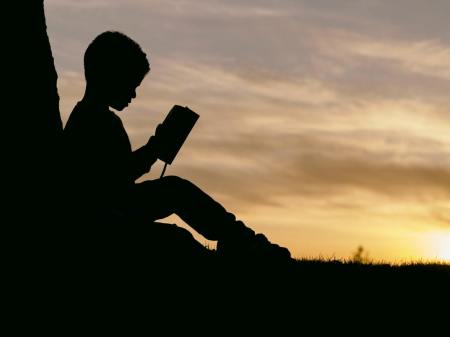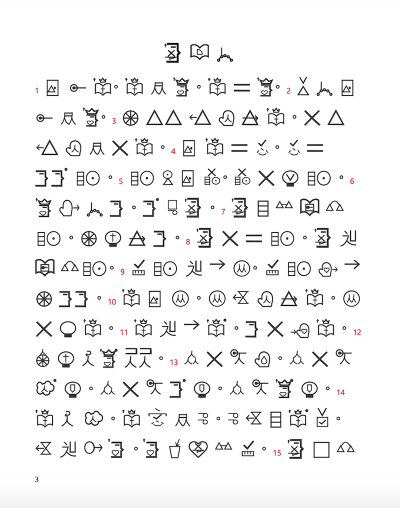New language created to bring the Gospel to millions of deaf, blind people worldwide

Wycliffe Associates has released a new translation of the New Testament in a new concept-based language that deaf and blind people across the globe can begin learning in less than a week.
The new notation is called SUN (Symbolic Universal Notation) and it is a symbolic representation of the words in Scripture developed by Wycliffe Associates, a prominent Bible translation organization, over the course of the last four years. SUN aims to provide a pathway to Christ for millions of deaf and blind people who have no other way of effectively communicating with the world.
“This is the first that I have seen or heard of anything like this in Bible translation,” SUN Program Director Lori Jenkins told The Christian Post. “Basically, what we have done is taken the New Testament and broken it down into the main concepts of each of the verses and each of the chapters. For each concept, we have created a symbol.”
The SUN New Testament, which was finished last year, was publicly announced during a late February dedication ceremony in Orlando.
So far, Jenkins said, Wycliffe Associates has printed copies of the SUN New Testament that can be read by deaf people. It is working on producing a 3D version that can be read by those who are both deaf and blind.
According to Wycliffe Associates, SUN has the potential to reach about 56 million people with the Gospel who may not otherwise be able to access it. SUN was developed by a former volunteer named Emily Wang, who was inspired after finding out that over 600,000 people worldwide are both deaf and blind.
Wycliffe Associates estimates that there are 70 million people in the world who are born deaf and about 80 percent of them can’t communicate in their local sign language.
“Only about 20 percent of the deaf population of the world has access to education,” Jenkins said. “So the question is, ‘How do you provide a Bible for those that have no education at all?’ And this is the problem that SUN answers.”
Wang aimed to create a system that could be read both visually and through touch. As a Chinese-American, she was inspired by the symbols in the Mandarin language and came up with symbols that could be understood universally.
Through a team of 400 online volunteers across the United States who created symbols to represent the precepts found in Scripture, the production of the SUN New Testament took about 1.5 years.

The translation is sourced from the Unlocked Literal Bible. Dr. John Luton, a Bible translation consultant with Wycliffe Associates, reviewed the translation’s Gospel of Luke.
“This is one of the best translations I have ever worked on,” Luton said in a statement.
In order to read the SUN New Testament, users must learn the 100 core symbols and also learn how the symbols can be combined to convey additional meaning.
“For those that are deaf, we're teaching them to read basically by sight,” Jenkins said. “We can have them reading within three to five days. We've had many people within three days basically start reading Mark 1. And the question that they have asked is ‘How can I know this Jesus? How can I have this Jesus in my heart?’ We've been able to lead many people to Christ through this.”
Jenkins said that SUN has been tested in nine different countries. Additionally, there has been exposure to SUN in about 16 different countries.
“Basically the idea is we get people together who are going to be working with those that are deaf and those that are deaf and blind. They are the people that we teach,” Jenkins explained. “So we go into a country, we teach this group of people how to teach SUN to the deaf and the deaf and blind. And it's up to them to take it and spread it throughout the country.”
According to Wycliffe Associates, SUN is easier to learn than braille, which can take years to master. SUN is a concept-based approach that does not rely on words or letter systems.
“You already know the concept. It is just learning to associate a symbol with the concept,” Jenkins detailed. “We are seeing deaf people who have never learned a national sign language, they are coming to these workshops where people are teaching them SUN and teaching them national sign langauge at the same time.”
“So they are really learning two languages at once. What we are seeing is we are seeing their world open up and we are seeing them being able to communicate with more people around them as well as being able to have access to God’s Word in a format they already understand.”
According to Jenkins, the goal is to take SUN to 40 new countries in 2020. However, she said that the goal could be impacted by travel complications caused by the coronavirus.
“We are also seeing other organizations that are taking a look at this and saying, ‘Hey we could use this in this way when we are teaching these children over here,’” she relayed. “It has the potential to reach so many different places and different people. It’s not just for the deaf and deaf and blind, you can also think about kids with autism and anybody who can’t communicate on their own. This has the potential to reach them.”
Wycliffe is currently working on a SUN version of the Old Testament. According to Jenkins, the translation will require the creation of additional symbols to reflect concepts found in the Old Testament, which is about twice the size of the New Testament.
“I don't know how much larger our symbol base is going to grow to,” Jenkins said. “I don’t know if it will double or not. But it might be pretty close to doubling in size.”
Follow Samuel Smith on Twitter: @IamSamSmith
or Facebook: SamuelSmithCP





















